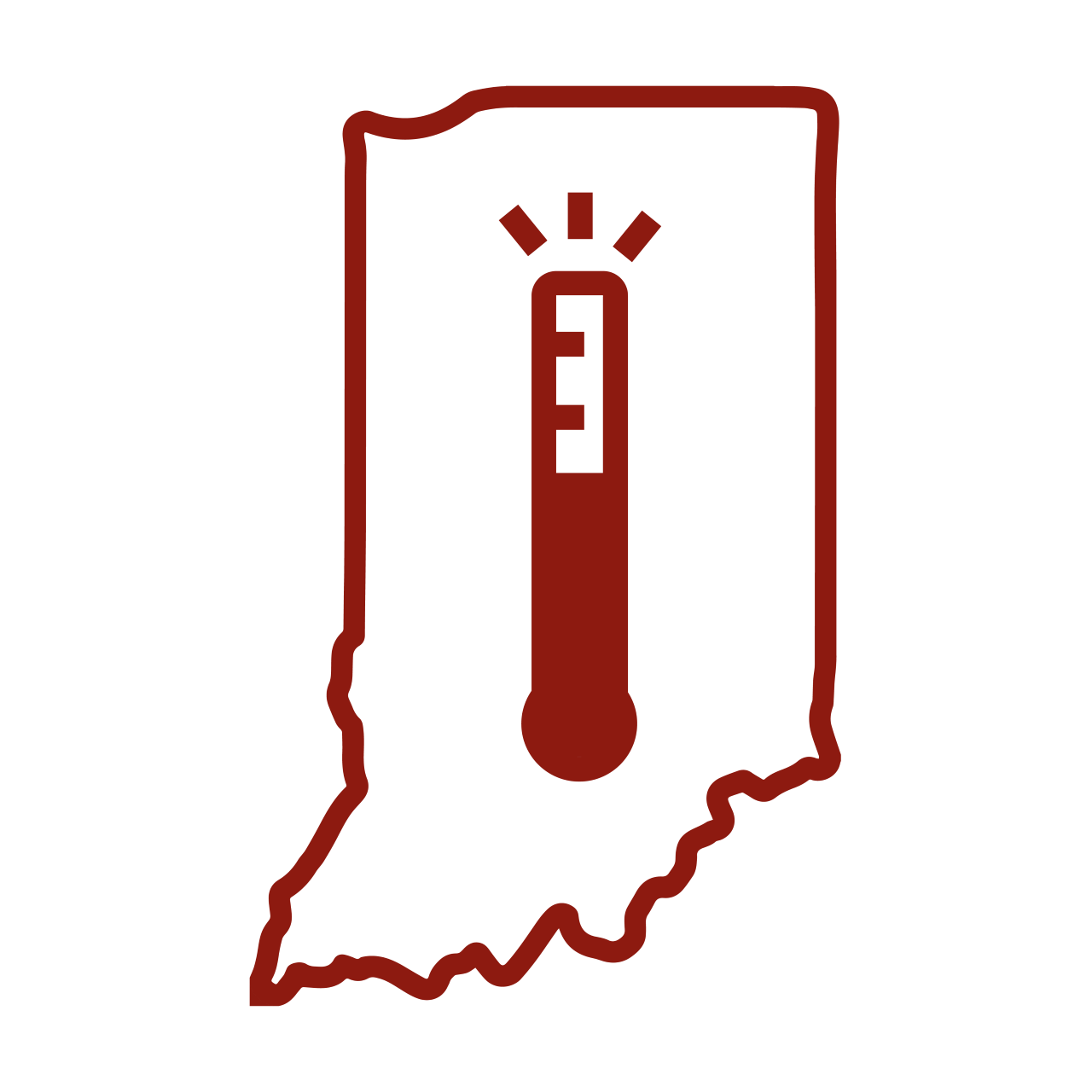Extreme heat is the deadliest weather hazard in the United States, and climate change is only increasing the occurrence of high-heat days. As Indiana endures another summer featuring long stretches of hot and dry weather, two Hoosier communities recently shared plans to protect their residents from the public health impacts of extreme heat.
Through the Beat the Heat program, Clarksville and Richmond developed community-specific heat management plans that identify strategies and actions to combat the effects of hot days and nights. The plans are the result of months of public surveys, interviews, focus groups, and temperature data collection led by the communities’ heat relief coordinators.
Beat the Heat, the first program of its kind in the state, is administered by Indiana University’s Environmental Resilience Institute and funded by the Indiana Office of Community and Rural Affairs.
“Hoosiers are used to dealing with all kinds of weather, but extended periods of hot temperatures come with extra risks that we haven’t typically experienced in Indiana in the past,” said Dana Habeeb, an assistant professor at IU’s Luddy School of Informatics, Computing, and Engineering and the program’s principal investigator. “To protect residents from heat exhaustion, heat stroke, and even death, communities need a plan to deal with extreme heat. By implementing their heat management plans, Clarksville and Richmond are not only looking out for their residents, they’re also developing strategies and resources that other Indiana communities can benefit from.”
Combined the two plans identified around 30 actions Clarksville and Richmond can take to lower the risks for heat. Each communities’ heat management plan covers four parts:
- a response protocol outlining strategies to protect vulnerable residents when a heat wave is imminent;
- an outreach strategy, including educational campaigns and workshops, to increase community awareness about the dangers of extreme heat and what to do to treat heat-related illness;
- home cooling strategies to increase energy efficiency and ensure access to air conditioning, especially for low-income residents; and
- ideas to combat heat through architectural and urban design—including green infrastructure like trees, green roofs, and more—which can have a significant impact on neighborhood air temperatures.
According to the Indiana Climate Change Impacts Assessment, the number of extreme heat events will continue to rise significantly in all areas of the state due to climate change. In Clarksville, extreme heat events are projected to double by 2050. In Richmond, those numbers are projected to triple. Developing short- and long-term solutions to high heat is a key outcome of both community’s heat management plans, so that local governments can increase community resilience to extreme heat over time. Heat mitigation strategies could be as simple as closing the curtains during the hottest times of day. On a longer timeline, local governments can plan to increase their tree canopies and shrink asphalt parking lots, which absorb heat, where it makes sense.
“Like in much of the US, parking lots in Clarksville are designed for the busiest retail shopping day of the year,” said Bronte Murrell, Clarksville’s heat relief coordinator. “On hot summer days, those empty lots really heat up, raising temperatures in the surrounding area.”
Both communities’ reports stress the importance of reaching vulnerable populations that are more susceptible to the health impacts of heat, including outdoor workers, older adults, pregnant people, low-income or energy-burdened households, and people experiencing homelessness.
“Establishing cooling centers for people who may not otherwise have a way of escaping the heat is one significant action a community can take,” said Richmond heat relief coordinator Lucy Mellen. “Making sure people avoid utility shutoffs in the summer is another.”
With the reports complete, both communities will shift their focus to implementing the identified actions. That starts with education. Clarksville and Richmond both hosted Beat the Heat weeks in July to highlight the importance of heat preparedness. Other early priorities include signing residents up for local heat alerts and distributing heat relief kits to those in need.
To help kick start conversations about summer heat throughout the state, the Beat the Heat team created a heat-preparedness toolbox that can be used by anyone to increase awareness about the public health impacts of extreme heat.
“Every heat-related illness or death is preventable,” Murrell said. “Communities that are taking heat seriously today are going to be much better prepared for the changes we’re going to see down the road.”
About the Environmental Resilience Institute
Indiana University’s Environmental Resilience Institute brings together a broad coalition of government, business, nonprofit, and community leaders to help Indiana and the Midwest better prepare for the challenges of environmental change. By integrating research, education, and community, ERI is working to create a more sustainable, equitable, and prosperous future. Learn more at eri.iu.edu.






